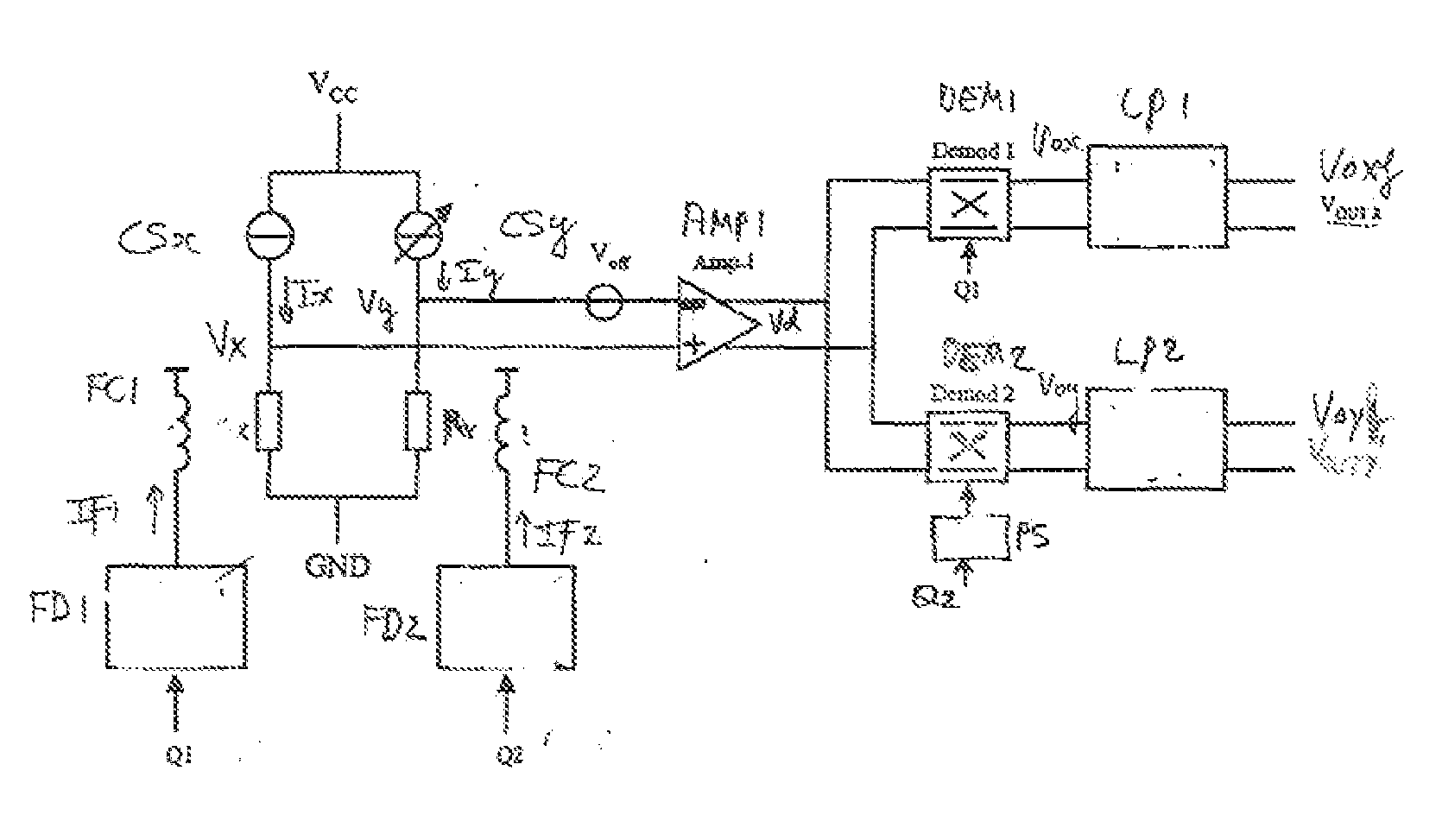Magnetic field sensor circuit
a sensor circuit and magnetic field technology, applied in the field of magnetic field sensor circuits, can solve problems such as inability to perform optimally and field sensor circuits, and achieve the effect of improving performan
- Summary
- Abstract
- Description
- Claims
- Application Information
AI Technical Summary
Benefits of technology
Problems solved by technology
Method used
Image
Examples
Embodiment Construction
[0038]FIG. 1 shows a circuit diagram of a prior art magnetic field sensor circuit using a flipping coil. The magnetic field sensor circuit comprises a sense unit 1 comprising a magnetic field sensor 10 and a flipping coil 11, a pre-amplifier 2, an offset filter 3, a phase sensitive demodulator 4, a flipping driver 5, and a clock circuit 6.
[0039]The flipping driver supplies a current IF through the flipping coil 11. The polarity of the current IF is periodically alternated to change the sensor operation between two stable operation modes in which the strip of sensor material is magnetized in opposite directions. Once the sensor 10 is put in one of the stable operation modes it will stay in this mode until the field applied is sufficiently strong the change the magnetization of the strip in the opposite direction. Thus, during a short time a current pulse IF is supplied to the flipping coil such that the strip is magnetized in one of the two directions. Next, this pulse is removed and...
PUM
| Property | Measurement | Unit |
|---|---|---|
| frequency | aaaaa | aaaaa |
| frequencies | aaaaa | aaaaa |
| frequencies | aaaaa | aaaaa |
Abstract
Description
Claims
Application Information
 Login to View More
Login to View More - R&D
- Intellectual Property
- Life Sciences
- Materials
- Tech Scout
- Unparalleled Data Quality
- Higher Quality Content
- 60% Fewer Hallucinations
Browse by: Latest US Patents, China's latest patents, Technical Efficacy Thesaurus, Application Domain, Technology Topic, Popular Technical Reports.
© 2025 PatSnap. All rights reserved.Legal|Privacy policy|Modern Slavery Act Transparency Statement|Sitemap|About US| Contact US: help@patsnap.com



